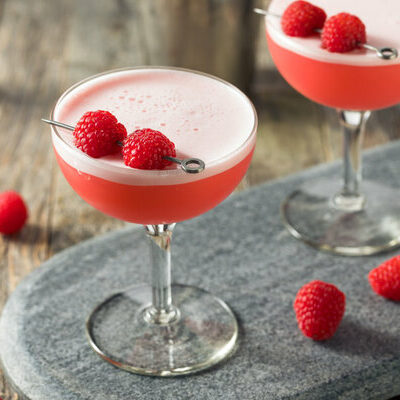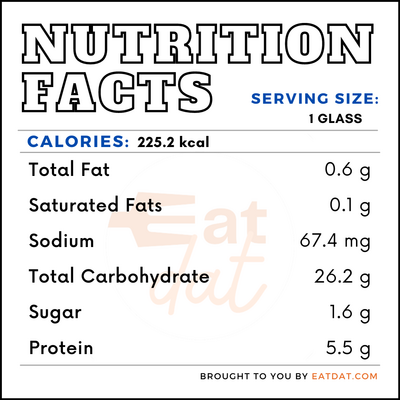
Clover Club
What is a Clover Club?
A Clover Club is a cocktail of American origin. The base spirit in the cocktail is gin, and other ingredients are lemon juice and raspberry syrup. An egg white is added to bind together all the ingredients and to give it a foamy consistency.
- This cocktail gets its name from a men’s club in Philadelphia, and was considered to be a male drink.
- It has a tart flavor with some sweetness. Several variations of Clover Club exist, and are often prepared by replacing the raspberry syrup with other syrups.
Some Prohibition era cocktails from the USA are:
- Tom Collins
- Bees Knees
- Southside
- Gin Fizz
- Clover Club
- Sidecar
- White Lady
- French 75
- Old Fashioned
- Hanky Panky
- Negroni
Origin of clover club
The Clover Club was invented sometime in the early 1900s in Philadelphia, USA. Members of a club of the same name that catered only to men became regular consumers of the cocktail. This club met at the Bellevue Stratford Hotel for four decades, and the hotel manager, George Boldt, took the cocktail with him when he left to work at the Waldorf Astoria Hotel. The first written recipe for Clover Club was in 1901 in The New York Press.
Nutrition
Nutritional profile for Clover Club (1 glass):

Gin has no nutritional value and without any vitamins and minerals, has empty calories. Lemon juice has few calories but is chock full of nutrition. A single lemon can provide 30 mg of vitamin C. In addition, lemon juice contains plenty of different flavonoids and phenolic compounds, which are powerful antioxidants. Also, regular consumption of lemon juice can help lower the risk of stroke, cancer, and asthma, while increasing iron absorption, immune system functioning, and weight loss.
Raspberries are a rich source of dietary fiber, vitamin C, manganese, copper, thiamin, riboflavin, pantothenic, folate, and vitamin E. Consumption of this fruit helps in preventing diseases such as cardiovascular diseases, diabetes, obesity, and Alzheimer’s disease and helps in reducing inflammation and oxidative stress. The egg whites provide protein as well as vitamin A, iron, vitamin B12, riboflavin, choline, zinc, and calcium in decent quantities. However, it is best to consume this drink responsibly and in moderation.
Commercial production
To prepare the Clover Club, the ingredients required are gin, lemon juice, raspberry syrup, and egg white. First, the ingredients are added to a cocktail shaker and shaken well to blend the egg white. Then, ice is added and the mix is shaken again until it is chilled and then double strained into a glass. The usual garnish is a raspberry or a slice of lemon. It is best served in a coupe glass or a martini glass.
Since raw eggs are required for this cocktail, it is best to buy them fresh. Pasteurized eggs may also be bought in order to prevent salmonella, though these don’t provide as much foam. Additionally, raspberry syrup may be replaced by fresh raspberries in order to have a fresher and more flavorful drink.
Clover club recipes
Clover Club is a classic and is still popular in bars around the world. Here are a few recipes:
FDA regulations
Gin is classified by the TTB as a distilled spirit with flavor derived from juniper berries and having at least 40 percent ABV. The FDA defines lemon juice as the unfermented juice obtained from ripe lemons from which seeds and excess pulp are removed. The acidity of concentrated lemon juice must not exceed 15 percent of the acidity of the finished food. Also, sugar or sucrose is defined as the product obtained by crystallization from sugar cane or sugar beet juice that has been extracted by pressing or diffusion, then clarified and evaporated. However, eggs have no standard of identity provided by the FDA.
References
Rachel, The Clover Club Cocktail – History, Recipe, Technique & Variations, Standard Spoon, https://www.standardspoon.com/blogs/the-cocktail-ritual/the-clover-club-cocktail-history-recipe-technique-variations-1
Burton-Freeman, Britt M et al. “Red Raspberries and Their Bioactive Polyphenols: Cardiometabolic and Neuronal Health Links.” Advances in nutrition (Bethesda, Md.) vol. 7,1 44-65. 15 Jan. 2016, doi:10.3945/an.115.009639, https://www.ncbi.nlm.nih.gov/pmc/articles/PMC4717884/
Klimek-Szczykutowicz, Marta et al. “Citrus limon (Lemon) Phenomenon-A Review of the Chemistry, Pharmacological Properties, Applications in the Modern Pharmaceutical, Food, and Cosmetics Industries, and Biotechnological Studies.” Plants (Basel, Switzerland) vol. 9,1 119. 17 Jan. 2020, doi:10.3390/plants9010119, https://www.ncbi.nlm.nih.gov/pmc/articles/PMC7020168/
